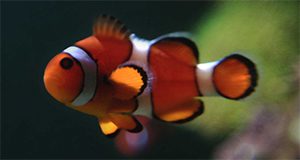Color in fish is mostly genetically determined, but they are unable to produce red, orange, yellow, green, and some blue colors themselves.They get these colors from their food. Fish raised in aquariums or recirculating water systems without pigment supplementation in their diet will fade and lose their vibrant hues. Even in ponds, dietary pigment supplementation can make fishes brighter and more variably colored, just like their wild counterparts. This 6-page fact sheet written by F. A. Chapman and R. D. Miles and published by the UF/IFAS School of Forest Resources and Conservation, Program in Fisheries and Aquatic Sciences, addresses how ornamental fish get their colors and provides a list of ingredient sources for diets that can be used to enhance and intensify fish colors.
Tag: Richard Miles
Improving Dairy Cow Metabolism through Safflower Oil Supplementation (AN271)
 Data collected in Florida studies indicate that feeding fat supplements that decrease milk fat test during the early postpartum period may help minimize negative energy balance, reduce body fat mobilization, and improve blood levels of beneficial metabolic and reproductive hormones. This 3-page fact sheet was written by Lokenga Badinga, Richard D. Miles, and Cristina Caldari-Torres, and published by the UF Department of Animal Science, September 2011.
Data collected in Florida studies indicate that feeding fat supplements that decrease milk fat test during the early postpartum period may help minimize negative energy balance, reduce body fat mobilization, and improve blood levels of beneficial metabolic and reproductive hormones. This 3-page fact sheet was written by Lokenga Badinga, Richard D. Miles, and Cristina Caldari-Torres, and published by the UF Department of Animal Science, September 2011.
http://edis.ifas.ufl.edu/an271
Adding Value to Milk by Increasing Its Conjugated Linoleic Acid Content (AN265)

One of the most promising bioactive components of milk is called conjugated linoleic acid. In laboratory animals, this naturally occurring fatty acid has been shown to inhibit cancer, promote the immune system, reduce the effect of type 2 diabetes, promote bone growth, and reduce blood clotting. This 3-page fact sheet briefly reviews dietary strategies for dairy cows that have been used to increase conjugated linoleic acid concentrations in milk and to show how this approach can be used to add value to milk and milk products. Written by Lokenga Badinga and Richard D. Miles and published by the UF Department of Animal Science, July 2011.
http://edis.ifas.ufl.edu/an265
FA159 Interpreting a Fish Food Package Label
FA159, a 6-page fact sheet by Frank Chapman and Richard Miles, provides farmers and pet owners a guide to interpreting the information on fish food labels. Includes references. Published by the UF Program in Fisheries and Aquatic Sciences, December 2009.
http://edis.ifas.ufl.edu/fa159
